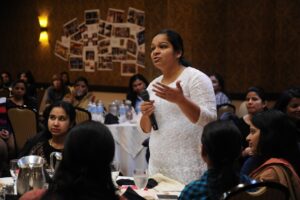The intersection of humanities and social sciences represents a rich tapestry of inquiry that seeks to understand the complexities of human experience. While humanities traditionally focus on the study of culture, philosophy, literature, and the arts, social sciences delve into the structures and dynamics of societies, including economics, sociology, psychology, and political science. This convergence is not merely an academic curiosity; it reflects a growing recognition that human behavior and cultural expression are inextricably linked.
As societies evolve, the need for a holistic understanding that encompasses both the subjective experiences captured by the humanities and the empirical data analyzed by social sciences becomes increasingly apparent. In recent years, this intersection has gained prominence in academic discourse, prompting scholars to explore how these fields can inform and enrich one another. For instance, the rise of cultural studies as a discipline exemplifies this blending, where sociological theories are applied to literary texts and artistic expressions.
This interdisciplinary approach allows for a more nuanced understanding of how cultural artifacts reflect and shape social realities. By examining the interplay between individual agency and societal structures, researchers can uncover deeper insights into the human condition, ultimately fostering a more comprehensive understanding of our world.
Key Takeaways
- The intersection of humanities and social sciences offers a unique opportunity to understand human behavior and society from multiple perspectives.
- Humanities play a crucial role in social sciences by providing insights into culture, history, and language, which are essential for understanding human societies.
- Social sciences contribute to humanities by providing analytical tools and methodologies for studying human behavior and societal structures.
- Interdisciplinary approaches in humanities and social sciences allow for a more comprehensive understanding of complex social issues and phenomena.
- Successful case studies demonstrate the benefits of collaboration between humanities and social sciences in addressing real-world problems and advancing knowledge.
The Role of Humanities in Social Sciences
Understanding Human Behavior Through Literature
Works such as George Orwell’s “1984” or Margaret Atwood’s “The Handmaid’s Tale” not only serve as cautionary tales but also provoke discussions about power dynamics, surveillance, and gender roles that resonate within contemporary sociological studies. Moreover, the humanities encourage a qualitative approach to research that complements the quantitative methodologies often employed in social sciences.
Qualitative Research Approaches in Social Sciences
Ethnographic studies, for instance, benefit from a humanities-informed lens that emphasizes narrative and context. By incorporating storytelling techniques and historical context into their analyses, social scientists can better capture the lived experiences of individuals within specific cultural settings. This qualitative richness enhances the understanding of social phenomena, allowing for a more empathetic and comprehensive exploration of issues such as migration, identity formation, and community resilience.
Enhancing Social Science Research with Humanities
The integration of humanities into social science research can lead to a more nuanced understanding of complex social issues. By combining quantitative and qualitative methods, researchers can develop a more complete picture of the social world, one that takes into account both the numerical data and the personal stories that underlie human experience.
Applications of Humanities-Informed Social Science Research
The Role of Social Sciences in Humanities

Conversely, social sciences play a crucial role in enriching the humanities by introducing empirical methods and theoretical frameworks that ground cultural analysis in observable realities. The application of sociological theories to literary texts can illuminate how societal structures influence artistic expression. For instance, feminist theory has profoundly impacted literary criticism by examining how gender dynamics shape narratives and character development.
This analytical lens not only enhances our understanding of specific works but also encourages broader discussions about representation and power in literature. Furthermore, social sciences provide tools for analyzing cultural phenomena through data-driven approaches. The rise of digital humanities exemplifies this trend, where scholars utilize computational methods to analyze large datasets of texts or social media interactions.
By employing techniques such as text mining or network analysis, researchers can uncover patterns and trends that may not be immediately apparent through traditional close reading methods. This fusion of quantitative analysis with qualitative interpretation allows for a more robust exploration of cultural dynamics, ultimately enriching both fields.
Interdisciplinary Approaches in Humanities and Social Sciences
| Approach | Benefits | Challenges |
|---|---|---|
| Interdisciplinary Research | Broader perspectives, innovative solutions | Integration of different methodologies |
| Collaborative Projects | Richer insights, diverse expertise | Coordination and communication |
| Integrated Curriculum | Holistic learning, real-world applications | Alignment of different disciplines |
Interdisciplinary approaches have become increasingly vital in bridging the gap between humanities and social sciences. Collaborative research initiatives often bring together scholars from diverse backgrounds to tackle complex societal issues. For instance, projects addressing climate change frequently require insights from environmental science, sociology, ethics, and cultural studies.
By integrating perspectives from various disciplines, researchers can develop comprehensive strategies that consider not only the scientific aspects of climate change but also its cultural implications and ethical considerations. One notable example is the field of medical humanities, which merges healthcare studies with literature, philosophy, and history to explore the human experience of illness and healing. This interdisciplinary approach fosters a deeper understanding of patient narratives, healthcare practices, and ethical dilemmas in medicine.
By examining how cultural representations of illness influence public perceptions and policy decisions, scholars can advocate for more compassionate and effective healthcare practices that prioritize patient experiences alongside clinical outcomes.
Case Studies of Successful Intersection of Humanities and Social Sciences
Several case studies exemplify the successful intersection of humanities and social sciences, demonstrating how collaborative efforts can yield innovative insights. One such example is the study of urban spaces through the lens of both geography (a social science) and literature (a humanities discipline). Researchers have examined how literary representations of cities reflect social realities such as class disparities, racial tensions, and community dynamics.
The works of authors like Charles Dickens or Zadie Smith provide rich narratives that illuminate the complexities of urban life while also serving as critical commentaries on societal issues. Another compelling case study is found in the realm of public history projects that engage communities in preserving their cultural heritage while addressing contemporary social challenges. Initiatives like oral history projects often involve collaboration between historians, sociologists, and community members to document personal narratives that reflect broader historical trends.
These projects not only contribute to academic scholarship but also empower communities by validating their experiences and fostering a sense of identity. By intertwining historical inquiry with social engagement, these efforts exemplify how humanities and social sciences can work together to create meaningful change.
Challenges and Opportunities in Integrating Humanities and Social Sciences

Methodological Differences
This divergence can lead to misunderstandings or reluctance to engage with each other’s approaches. The differences in methodologies can create a significant barrier to collaboration, as scholars from each field may have different expectations and standards for research.
Academic departments are frequently siloed, with funding structures favoring traditional disciplinary boundaries over innovative cross-disciplinary initiatives. This can make it difficult for scholars to secure funding or publish research that combines multiple fields.
Opportunities for Reform
Scholars may face challenges in securing grants or publishing research that straddles multiple fields due to entrenched norms within academic publishing. However, these challenges also present opportunities for reform within academia. By advocating for interdisciplinary programs and fostering collaborative research environments, scholars can work towards dismantling these barriers.
Future Directions
By working together to address these challenges, scholars can create new opportunities for interdisciplinary collaboration and advance our understanding of complex social and cultural issues.
Future Directions for Intersection of Humanities and Social Sciences
Looking ahead, the future of the intersection between humanities and social sciences appears promising as both fields increasingly recognize the value of collaboration. Emerging technologies offer new avenues for interdisciplinary research, enabling scholars to analyze vast amounts of data while incorporating qualitative insights from humanities disciplines. For instance, advancements in artificial intelligence can facilitate text analysis across diverse literary corpora, allowing researchers to identify trends in language use or thematic development over time.
Moreover, societal challenges such as climate change, inequality, and public health crises necessitate interdisciplinary approaches that draw on the strengths of both fields. As global issues become more complex, scholars will need to collaborate across disciplines to develop holistic solutions that consider not only empirical data but also cultural narratives and ethical implications. Initiatives that promote public engagement with research—such as community-based participatory research—will further enhance the relevance of interdisciplinary work by grounding academic inquiry in real-world contexts.
The Importance of Collaboration between Humanities and Social Sciences
The collaboration between humanities and social sciences is essential for fostering a comprehensive understanding of human experience in an increasingly complex world. By integrating qualitative insights with quantitative analysis, scholars can develop richer narratives that reflect the multifaceted nature of society. As we navigate pressing global challenges, interdisciplinary approaches will be crucial in crafting solutions that honor both empirical evidence and cultural context.
The future lies in embracing this intersection as a space for innovation, dialogue, and transformative scholarship that ultimately benefits society as a whole.
One interesting article related to humanities and social sciences is com/indian-aesthetics-exploring-the-nature-philosophy-and-multifaceted-functions-of-art/’>Indian Aesthetics: Exploring the Nature, Philosophy, and Multifaceted Functions of Art.
This article delves into the rich cultural heritage of India and how art plays a significant role in shaping society and human experiences. It explores the various philosophical perspectives on art and its impact on individuals and communities, making it a fascinating read for those interested in the intersection of art, culture, and philosophy.
FAQs
What are the humanities and social sciences?
The humanities and social sciences are academic disciplines that study human society and culture. The humanities focus on the study of human culture, including literature, philosophy, history, and the arts. The social sciences focus on the study of human behavior and society, including anthropology, sociology, psychology, and economics.
What are the main differences between the humanities and social sciences?
The main difference between the humanities and social sciences is their focus. The humanities focus on the study of human culture, including literature, philosophy, history, and the arts, while the social sciences focus on the study of human behavior and society, including anthropology, sociology, psychology, and economics.
What are some career options for those studying humanities and social sciences?
Some career options for those studying humanities and social sciences include teaching, research, writing, journalism, social work, counseling, public policy, law, and business.
Why are the humanities and social sciences important?
The humanities and social sciences are important because they help us understand and interpret human culture and behavior. They also help us develop critical thinking, communication, and problem-solving skills, and contribute to a well-rounded education.
How do the humanities and social sciences contribute to society?
The humanities and social sciences contribute to society by helping us understand and interpret human culture and behavior, promoting critical thinking and communication skills, and addressing social and cultural issues through research and advocacy.























+ There are no comments
Add yours